Follow your passion - learn to identify, grow and use scented plants
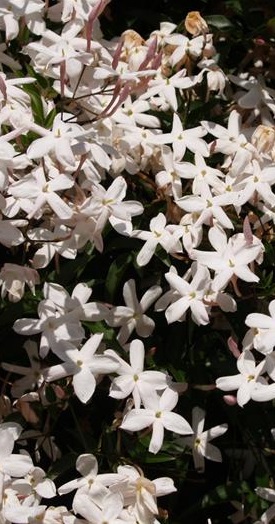 Learn to identify, grow (propagation and culture), and use different types of scented plants.
Learn to identify, grow (propagation and culture), and use different types of scented plants.- Find out how to harvest and dry scented plants.
- Through practical assignments actually make a whole range of exciting herb crafts (e.g. pot pourri, soaps, candles).
- Learn also how to landscape a scented garden and expand your knowledge of dozens of different types of scented plants.
- Look at operation options, farming options.
- How to do market research.
- Learn about creating a scented garden
The course covers -
- cultivation
- propagation
- soil types
- pests and diseases
- greenhouse growing
- marketing
- plant health.
A Course For ...
A course for -
- Gardeners
- Garden Designers
- Nurserymen
- or anyone with a passion for fragrant plants.
COURSE STRUCTURE AND LESSON CONTENT
The course is divided into eight lessons as follows:
Lesson 1. Introduction
- How Scented plants are used
- Types of scented plants
- Plant Naming System and pronouncing plant names
- Scented Plant Families
- Resources and Networking
Lesson 2. Culture
- Soils
- Soil Composition, soil types, improving soils
- Soil Mixes, potting media and component
- Plant Nutrients and fertilisers
- Plant Health -identifying and controlling problems
- Weeds and weed control
- Watering plants
- Planting, staking, mulching, pruning, protection from wind, salt air, etc.
- Plant reviews
- Propagation
- Methods of propagating this group of plants; creating a scented garden; growing in pots, inside, or in the open ground.
3. Crafts from Scented Plants and Herbs
- Herbs for cooking
- How to dry herbs
- Pot pourri, scented candles, tussie mussies, sachets, etc.
- Cosmetic uses - hair rinses, baths, skin care
- Candle Making
- Exotic herb oils
- Scented Plants in Pots
- Lavender crafts
- Rose Crafts
Lesson 4. Harvesting and Processing
- Harvesting hints
- General rules for harvesting flowers
- Storing harvested material
- Freezing
- Deterioration
- Bud harvesting
- Shelf life
- Post harvest treatments
- Chemical treatments
- Harvesting and grading carnations
- Harvesting and drying lavender
- Harvesting Herbs
- Harvesting leaves, roots, fruit, seed
- Harvesting for medicinal use
5. Commonly Grown Varieties
- Listing dozens of scented garden plants
- Several plants are dealt with in detail, including: Carnations, Roses, Gardenias, Heliotropium, Murraya, Pelargonium and Daphne
- Scented Flowers -Alstroemeria, Antihrrinum, Chrysanthemum, Freesia, Iris, Narcissus, Orchids, Matthiola
Lesson 6. Other Important Scented Plants
- Lilium
- Fragrant Australian natives
- Boronias
- Other Scented Plants for Temperate Areas
Lesson 7. Commercial Applications
- The Business of Scented Plants
- The most commercially grown species
- Herbal Teas
- Production Plan
- Making a scented plant operation
- Standards
- Farm Layout
- Marketing your produce
- How to sell
- Creating a Scented Garden
- Drawing a Plan
- Garden Design
Lesson 8. Special Assignment
- Students must complete a special assignment on one selected plant or group.
COURSE AIMS
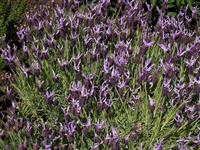 Know the plant naming system and the uses of scented plants, indicate the genus, species and variety in a selection of plant scientific names.
Know the plant naming system and the uses of scented plants, indicate the genus, species and variety in a selection of plant scientific names.
- There are many ways you might classify scented plants.
- By plant part -scented flower, scented foliage, scented fruit, scented root, etc.
- By plant group -scented bulbs, scented climbers, scented trees, scented shrubs, etc.
- By type of scent -strong scent, subtle scent, sweet scent, foul scent, etc.
- By use -edible herbs, plants for landscape use, for use in perfumes & cosmetics, etc.
- By plant family -plants which have similar botanical characteristics.
- Identify groups of scented plants according to families and the characteristics of those families
- Many scented plants tend to fall into one of the several particular plant families. By becoming familiar with these families, you will develop a foundation for understanding and identifying scented plants.
- Understand the cultural requirements of a range of scented plants
- Manage the health of Scented Plants
- Prevention is always the best cure. Try to keep the environment friendly to the helpful insects, a healthy soil structure with added compost, and maintain suitable environmental conditions for the plant. If you don’t have the right plant in the right place, they tend to struggle more.
- Heat, cold, wind, rain, frost, shade, pollution and other environmental problems can have disastrous effects on plants. Learn how it affects them.
- Harvest and process a range of scented plants.
- Make a range of products and uses from scented plants:
- dried herbs
- potpourri
- cosmetic products
- lavender crafts
- rose crafts
- other scented plant uses.
- Explain harvest and post harvest techniques for the production of scented crops.
- If you are to reap the benefits of quality produce, crops must be handled properly during harvest and post harvest. The various methods for harvesting herbs is mentioned.
- Identify and Cultivate a range of the most commonly grown scented plants.
- Many scented plants are also commonly known as herbs however there are many that are not herbs but still have a wonderful scent and should be considered for inclusion in a scented garden.
- Compare the cultural requirements of fifteen different scented Australian Native plants.
- Discuss commercial applications of scented plants.
- Many species of scented plants are grown commercially for their:
- Cut flowers, Oils, Foliage, Roots, and Tubers
- Some producers set up to specifically supply commercial growers (i.e. producers of oil or bulk flowers) with tube-stock or grow scented plants for specialist retail nurseries.
- Investigate operation options, farming options.
- How to do market research
- Plan the creation of a scented garden.
WHAT YOU WILL DO IN THIS COURSE
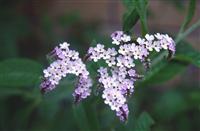 Make up a list of at least 50 sources of information, about the identification and use of scented plants.
Make up a list of at least 50 sources of information, about the identification and use of scented plants.- Obtain one soil sample typical of your local area; name the soil and test the drainage of the soil.
- Obtain (or make up) a potting mix appropriate for growing herbs in.
- Make up a propagating mix, appropriate for striking seed or cuttings in.
- Visit a nursery or garden growing scented plants.
- Obtain any materials which are needed for propagating scented plants by grafting, stem cuttings, root cuttings, aerial layering and seed.
- Harvest and dry parts from at least three different herbs.
- Make the following scented products: pot pourri, a cosmetic product, a herb vinegar, a herb salt and one other craft product.
- Make a bottle of either herb oil.
- Prepare hot and cold herb teas.
- Prepare one edible product, using a part of a scented plant for flavouring.
- Produce one sample of a scented oil, using fresh harvested material from a scented plant.
- Visit a general nursery. Note what herb seeds, and herb plants are commonly available.
- Research the cultural requirements of some (or all) of the following genera: Viola, Viburnum, Lonicera, Jasminum, Daphne and Gardenia. Find information on Magnolias, Lilac,Conifers, Scented Camellias, Citrus, Convallaria (Lily of the Valley), Lilium, Hyacinth, Forsythia and Michelia.
- Visit a scented garden.
- Visit and analyse the business operations of at least two herb enterprise.
- Design a garden featuring scented plants.
- Compare the commercial potential of three different types of herb enterprises, in your locality (based on the set task).
- Propagate a scented plant
- Prepare 48 plant review sheets of scented plants.
MORE PLANTS ARE SCENTED THAN MOST PEOPLE REALIZE
Most people recognise a range of fragrant annuals, perennials and shrubs, but there are also many fragrant trees.
Some scented plants aren't always fragrant, but others are. Some will have the strongest scent at a certain time of the year or even time of day; and their fragrance may go almost unnoticed at other times. Others only ever have a very subtle scent; while some can have a smell that overpowers the senses.
When you choose a scented plant, it is important to know and understand it's fragrance; the times when it smells and when it doesn't, and the strength of it's scent.
Scented trees are larger plants, so the quantity of aromatic chemicals released will be potentially greater than in tiny low growing plants. Because trees are high though, the scent can more readily be dispersed by wind. If the smell is mild, this may mean it goes unnoticed unless grown in a confined space; but if strong, the aromatic compounds dispersed from a tree can have a very wide impact
Consider just some scented trees:
Acacia dealbata (Mimosa Tree) –Sweet scented flowers, feathery silver grey leaves, to 30 m tall.
Acacia suaveolens (wattle) - flowers have a strong sweet scent.
Backhousia citriodora - lemon scented grows to 10 to 20m.
Cercidiphyllum japonicum ‘Pendulum’ (Katsura Tree), spectacular weeping tree with heart shaped leaves that not only colour in a spectacular way in autumn (yellow through to red) but also has a caramel scent.
Buddleja alternifolia – large shrub or small tree 4m tall with a honey scent in summer.
Camellia oleifera - small elegant tree to 6m x 3m fragrant white flowers in late winter through to early spring.
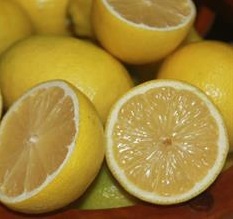
Citrus spp. Limes, oranges, lemons, cumquats, mandarins and so on all produce scented flowers in spring and autumn (depending on the species).
Cladistris lutea (yellow-wood) A spreading vase shaped tree that have dark green foliage changing to orange and yellow in autumn. Stunning wisteria like, pendulous, fragrant white flowers in late spring through to early summer.
Cornus alterifolia (pagoda dogwood) tiered branches that are laden with small creamy fragrant flowers in early summer – a bonus is the deep-blue to purple roundish fruit in late summer. A stunning example.
Cornus florida –A subtle fragrance from the flowers, deciduous tree to around 6 m tall.
Eucalyptus nicholli (peppermint gum) - peppermint in leaves grows to 15m tall and suits most climates.
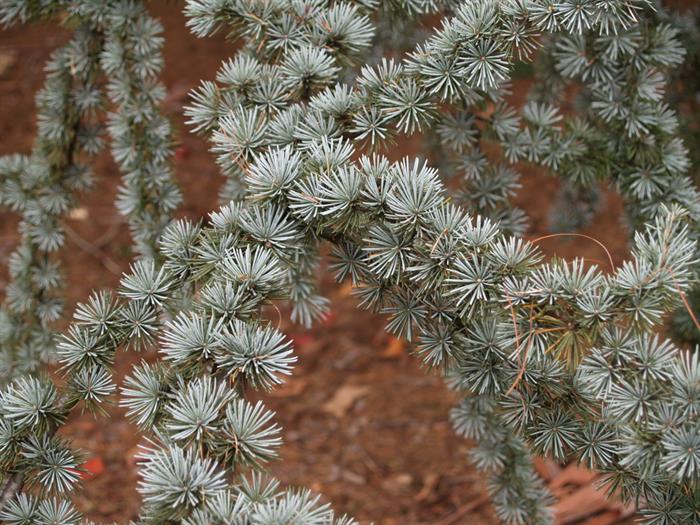 Franklinia alatamaha - fragrant white flowers with abundant yellow stamens in late summer through to early autumn when the leaves also change from dark glossy green through to orange red and then purple before dropping.
Franklinia alatamaha - fragrant white flowers with abundant yellow stamens in late summer through to early autumn when the leaves also change from dark glossy green through to orange red and then purple before dropping.
Hammamelis x intermedia (white Hazel) pale yellow clusters of fragrant (fruity) flowers in late winter through to the end of spring. Large shrub to small tree.
Michelia doltsopa -to 10m tall, creamy white scented flowers.
Michelia yunnanensis - 'Scented Pearl Magnolia' is a small tree 3m x 1.5m with strongly scented flowers in spring. There are many other cultivars.
Prunus spp -Many of the Prunus have scented flowers, some more strongly scented than others. Prunus mume has a stronger scent while the Flowering Cherry (Prunus serrulata) and peach (Prunus persica) usually have a more subtle fragrance.
Robinia pseudoacacia (black locust) - white flower clusters in late spring; attracts beneficial insects.
More Trees with Fragrant Flowers:
Azara spp.
Clerodenrum trichotomum
Cretaegus spp. (strong)
Eriobotrya japonica
Euonymus sanguineus
Fraxinus ornus (mild)
Laburnum alpinum (mild)
Magnolia soulageana (mild)
Magnolia virginiana (strong)
Paulownia tomentosa (strong)
Pyrus spp. (strong)
Rhododendron fragrantissima
Sophora japonica (mild)
Tilea europea (strong)
Viburnum burkwoodii (strong)
More Trees with Fragrant Foliage:
Cedrus spp. (Strong)
Davidia involucrata
Juglans nigra
Populus balsamifera (spring foliage)
Sassafras albidum
Employment Opportunities:
- Starting your own business with scented plants.
- Designing gardens with scented plants.
- Working for a company that specialises in scented plant products.
You can enrol today
You can enrol on this Scented Plants course today - there is never a better time to start than now!
If you have any questions about the course, or studying with ACS, please get in touch with our specialist Horticulture tutors today - they will be pleased to help you.